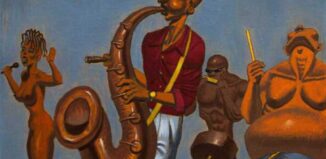Head of the Ulna
By Tessa Vroom
The brown-grey weathered bone lay within my palm. I had been searching for fossils within the shade under sweeping tree branches overhanging the gentle creek, but instead found a bone. Staring at my discovery, I reconciled two facts: the animal that owned this was dead for sure, and there was no way my mama would let me bring it home.
#
Bones are the framework of the body, defining the unique shape of a body. Bones are much like snowflakes: no two people have the same jaw, the same ribs, the same arms. Two bones make up the forearm: the ulna and the radius. The ulna stretches from the hand to the humerus, brushing against the carpal bones by the thumb and settling gently in the crook of the arm to form the elbow joint.
#
The first time someone besides my mama told me I was attractive I bloomed. She told me I looked like a twelve-year-old boy a week later. I asked her why she loved me then, and she shrugged. I forgave her quickly. I never told her that after, when I looked in the mirror, I could no longer find the beauty within my round cheeks, crooked eyebrows, and short hair.
#
Ulna means “elbow.” Ulna involves brushing the tongue against the back of the teeth and snapping it down to make “l” and “n” and ends in an open “ah,” a breath of relief. It’s a beautiful, round word, full of curves. The bone, by contrast, is long with awkward ends full of bumps and bits that don’t seem to fit. When you squint, the ulna can look like a budding iris.
#
I stare every morning at the slight bend at the bridge of my nose, the high rise of my forehead, the red patches by each jaw: a permanent blush attempting to flee from the confines of my face. I have to reintroduce myself daily to the stranger in the mirror. I raise my hand to wave, and see my wrist. My peaked wrist bone, that is mine. I know it, I know the little freckle at the base of the hill, I know the dark hairs that grow like dry grass. I touch the pronounced triangle of bone under my skin, feel real. My peaked wrist bone, that is mine, but my face and body belong to a stranger.
#
Forearm fractures account for more than 40% of all childhood fractures. Forearm fractures often occur on a playground, or during sports.
#
My older sister says her wrist talks to her, likes to remind her it exists. I remember when she broke her wrist; I was jealous of the cast, the reason to pay attention to her body that had nothing to do with her bruised knees, the width of her hips and shoulders. I never thought about the pain that came with falling hard enough to crack bone. I learned about that pain thrice over as retribution for my jealousy: my nose, my right shoulder, and my cheek (the zygomatic arch). My cheek talks to me sometimes when the weather is cold. I do my best to ignore it. I’m mad at it for being swollen, for pressuring my right eye, for making my face crooked.
#
At birth, the ends of the ulna are cartilaginous. After about the fourth year, the head and styloid process form, but it takes another fourteen to sixteenyears for the ulna to finish ossifying.
#
I don’t tell my mama I hate my body. I don’t tell her I can’t find it within myself to love the shape I’ve been given. That ever since I started puberty, before my ulna was finished turning to bone, I could not fit comfortably within the confines of my skeleton. That I spend time every morning picking out an outfit to hide all the worst parts of myself from view. Only my wrists survive the suffocation of cloth. I don’t tell her I hate my body, but I think she knows.
#
Near the wrist, the ulna has two parts; the larger is rounded, termed “the head of the ulna.” The narrower end, which stretches up the side of the wrist beside the hump of the head of the ulna, is the styloid process. The styloid process looks like a canine.
#
I wrap my middle finger and thumb around my wrist, measure the distance around, feel my bones moving. There’s one part of the ulna, in particular, that fascinates me. It juts out of the landscape of my skin, a small hill marring the smooth topography. My right wrist has a peak taller than my left, but I seem to be the only one who can tell. I spend many hours climbing the hill with my nail.
#
I dream of my skin melting off as I stare in the mirror, leaving red-stained bones behind. I raise my hand, recognize the bump at my wrist, and greet myself.
BIO

Tessa Vroom is Dutch-American and grew up biking over Dutch polders and hiking the mountains of the Pacific Northwest. She is a creative writing major at Western Washington University, and spends the majority of her time wandering through Bellingham listening to podcasts. She works as an audio assistant for a podcast production company.


















